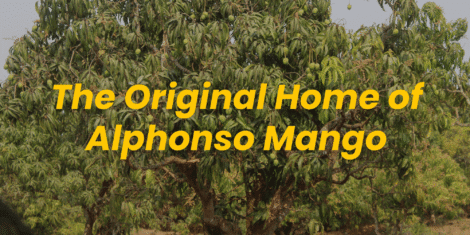Few fruits inspire as many legends as the Alphonso mango of Maharashtra’s Konkan coast. Long before modern grading stations and GI tags, stories about Hapus traveled by word of mouth from one orchard to the next. Elders recount these folk tales each season to remind younger generations that mango farming is as much about heritage as it is about commerce. Here are some of the most enduring narratives and customs that still accompany every harvest in Ratnagiri, Devgad, and Sindhudurg. Konkan Mango Folk Tales
The Portuguese General and the First “Golden” Mango
According to local lore, the 16th‑century Portuguese commander Afonso de Albuquerque brought mango grafting techniques to western India. Villagers say he challenged royal gardeners in Goa to create a fruit that combined Goa’s fragrant Malcurada with a local wild mango. The resulting variety matured into the golden Alphonso we love today. To honor this origin story, many Konkan farmers still offer the first ripe mango of the season at their village chapel or temple—thanking the land for a fruit that carries foreign influence yet feels fully Indian.
The Fisherman’s Prayer for a Sweet Monsoon
In coastal hamlets south of Devgad, an old belief links mango sweetness to the first catch of the fishing season. Fishermen returning from their inaugural monsoon trip traditionally gift two dozen small fish to the orchard owner in exchange for the season’s first crate of Hapus. Elders explain that the salt mist from the sea nourishes mango blossoms, while the orchard’s shade shelters fishing nets before repairs. This barter ritual solidifies a bond between sea and soil, keeping both livelihoods intertwined.
The Talking Mango Tree of Pawas
Near Pawas in Ratnagiri district, villagers speak of a 200‑year‑old Alphonso tree called “Boljani Amba”—the Talking Mango. Legend claims that in years when the tree bears fewer fruit, its rustling leaves foretell heavy rains or political turmoil. Locals still gather beneath its branches on Akshaya Tritiya to “listen” for signs through patterns of falling leaves or chirping birds. Whether prophecy or coincidence, the tradition fosters community conversation about weather patterns and farm planning.
The Runaway Mango and the Monsoon Bride
Children in Sindhudurg hear bedtime stories about a runaway mango that rolled downhill during a thunderstorm and came to rest beside a newly married bride’s doorstep. The next morning the fruit had sprouted, symbolizing prosperity for her family. Inspired by this tale, many newlyweds plant a mango sapling on their bridal property, believing it will safeguard their marriage and finances. Some families still call their first‑year harvest “lagna‑amba” (wedding mango).
Why Mangoes Should Never Sleep Alone
A playful superstition says that ripe Alphonso mangoes should always rest in pairs inside straw beds; otherwise, a lone fruit will sulk and turn sour. Grandmothers use the story to teach children proper stacking techniques during the critical seven‑day ripening period. Science might credit uniform ethylene distribution for even sweetness, but folklore makes the lesson memorable—and protects delicate fruit from bruising.
Night‑Time Harvest Songs
Older harvesters recall “Aamba Pawli,” a lilting tune sung under moonlight as workers climbed trees to cut fruit before dawn temperatures spiked. Each verse praised an aspect of the mango—its blush, its fragrance, its value in dowries. Today some cooperatives revive the song during cultural fairs, showing tourists how music once guided the rhythm of picking and sorting.
How These Tales Influence Modern Farming
Folk stories often hide practical wisdom:
- Respect for the sea breeze translates into careful orchard placement on gentle coastal slopes.
- Rituals of gifting the first fruit encourage selective harvesting when Brix levels peak, enhancing quality.
- Community gatherings under historic trees foster collective decisions on pest management and irrigation schedules.
Keeping Stories Alive Through Commerce
At Ratnagiri Hapus Store we encourage partner farmers to include short story cards in premium gift boxes. A customer biting into a naturally ripened mango also discovers the legend behind it, bridging urban and rural worlds in a single crate. Our blog series and social media reels highlight elders narrating these anecdotes in Marathi with English subtitles, turning oral tradition into shareable content.
Final Thought
From the Talking Mango to wedding saplings, Konkan folk tales remind us that every Alphonso carries layers of culture beneath its saffron skin. When you savor your next slice of Hapus, you’re tasting centuries of storytelling—proof that flavor is as much about memory as it is about chemistry. By preserving and sharing these narratives, farmers and consumers together ensure that the spirit of the Konkan coast ripens anew each season.




